LA’s black enclave buffeted by police pressure and tech-driven gentrification
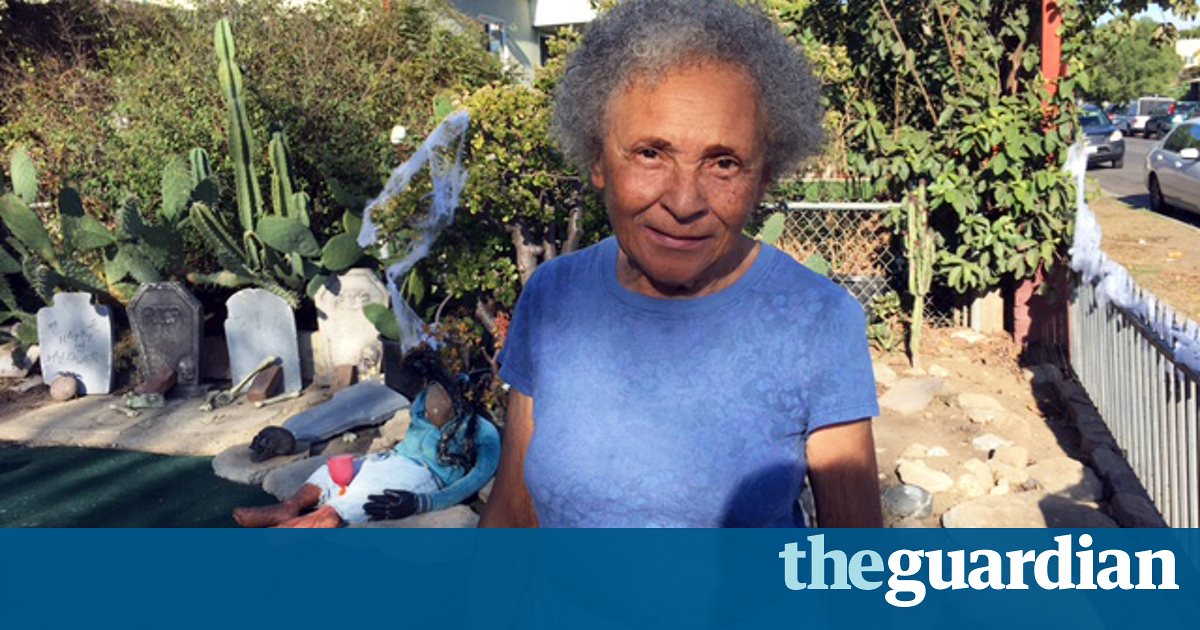
The Oakwood area of Los Angeless coastal resort is changing fast on the back of the Silicon Valley boom and a gang injunction some say amounts to harassment
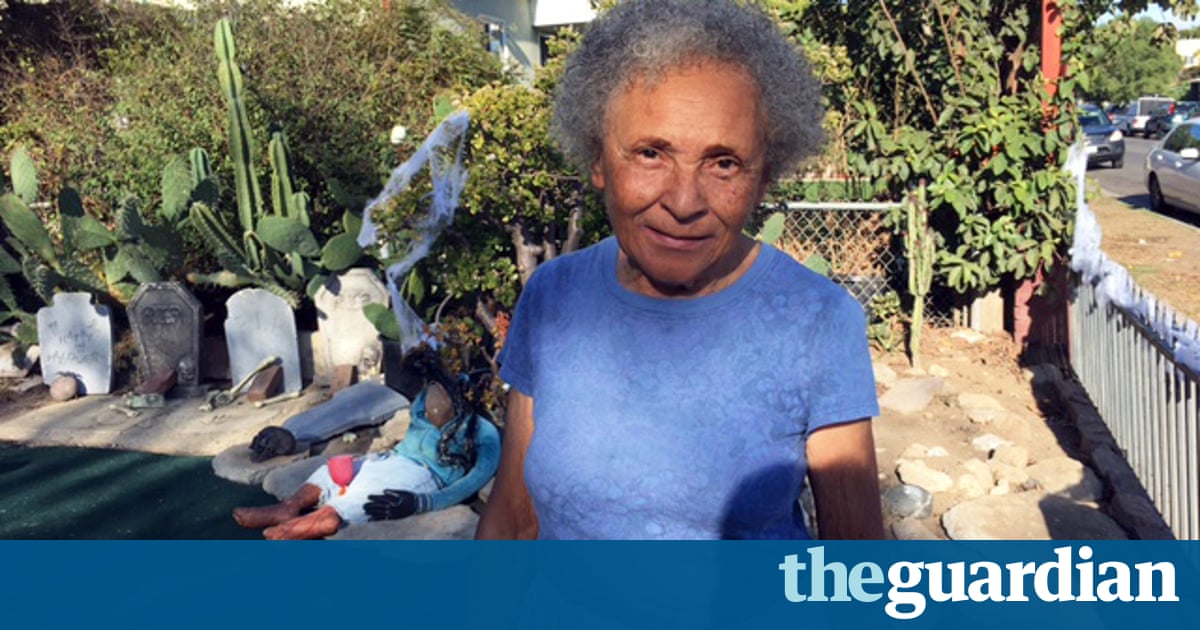
African Americans helped to build Venice a century ago, gifting Los Angeles a coastal resort, but were banned from owning homes along the boardwalk and canals, which were reserved for white folk.
Instead a one-square-mile cluster of streets a mile inland, away from tourist view, was set aside for black residents. It was called Oakwood and became a tight-knit community with vibrant street life, neighbours saluting each other from porches.
Its nickname, Ghost Town, possibly alluded to life in the shadows. It was one of the only enclaves for blacks, and later Latinos, close to the ocean on the entire US west coast.
These days Ghost Town has a new meaning.
All the people that used to live here have moved out, said Charles Williamson, 84, a retired clerk. Took the money and run. Or couldnt afford to live here. Or got harassed out of it.
Venice, a chameleon that has been an oil town, bohemian idyll, crumbling ghetto and tourist mecca, is adopting a new guise: tech citadel.
Tech-driven gentrification is also transforming San Francisco, Oakland and other California cities but in Venice there is a twist. A police gang injunction is allegedly accelerating the process by hounding black and Latino residents.
A drastic measure adopted in 1999 to contain gang violence has endured even though Oakwood is now largely peaceful, with gang members dead, retired or dispersed. The injunction covers parts of adjacent Abbot Kinney Boulevard, a parade of chi-chi boutiques, cafes and restaurants which GQ dubbed the coolest block in America.
Members of Oakwoods dwindling population of colour allege police use the injunctions extensive powers to harass them while turning a blind eye to infractions by white arrivals.
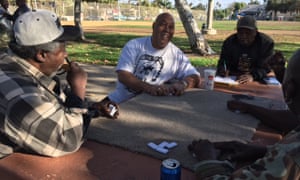
We dont feel welcome here. Wrong complexion, said Donald Coulter, 61, a lifelong resident, who was playing dominos with black friends in the park.
Another man in his 60s, who declined to be named because he felt targeted by the injunction, said he could be detained just for greeting a friend in the street while whites rode bikes without lights and walked dogs off leashes, trivial-seeming violations that underlined racial inequity.
Robin Rudisill, a former neighbourhood council member, shook her head when asked about gentrifiers. Gentrifuckers, she corrected.
Census and city figures show that since 1980 the proportion of black residents has almost halved from 9.6% to 5.4%, a trend probably amplified by the current real estate boom.
Soaring property values Venice is pricier per square foot than Beverly Hills, Bel Air and San Francisco have tempted many to cash in on properties inherited from parents and grandparents. Some have moved to other parts of LA, others out of California altogether.
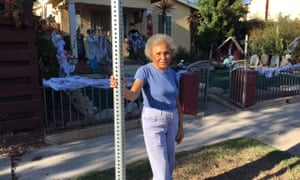
Jataun Valentine, 79, who lives in a house her grandfather built, said long-term neighbours and the wooden bungalows they called home were vanishing, giving way to high fences and mansions of steel and glass. The new neighbours are all hiding. You never see them. Everything is like a fortress.
Ira Koslow, president of Venices neighbourhood council, said sellers were just as culpable as the buyers who replaced airy bungalows with monster homes. Its heartbreaking. But its an economic issue not a race issue. This is capitalism. People who have owned property since forever got a huge bonus.
The gang injunction, however, injects an additional factor. A civil court order, it imposes parole-like restrictions on suspected gang members, for instance socialising with other suspected gang members, including relatives. Or wearing colours associated with a gang. Violators can can be charged with contempt and jailed for six months.
LA has used such injunctions since the late 1980s when the city became a byword for drive-by shootings. Homicide rates in LA County have since plunged from 2,589 in 1992 to 649 last year, and LA is now one of the USs safest metropolises. But the injunctions endure.
The American Civil Liberties Union filed a federal lawsuit last month to stop the enforcement of 46 separate injunctions against approximately 10,000 people covering 75 square miles, or 15%, of LA. The suit complained authorities often obtained an injunction against a gang, not individuals, but that police were then free to slap restrictions on anyone.
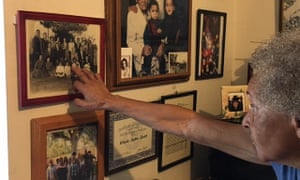
Those who have been on the injunction for decades feel like theyre under constant scrutiny. Its used as a tool of harassment, said Catherine Wagner, an ACLU attorney who specialises in policing in southern California.
Melvin Hayward, a gang-prevention activist with the Helper Foundation, called the Venice injunction obsolete and unjust. We call it blanket suppression. Affected people could not leave home together, even if related, he said.
The harassment fuelled gentrification, Hayward said. Definitely a connection. Youre seeing black and brown being targeted.
Josh Green, of the not-for-profit Urban Peace Institute, cited one man, out from jail, who was returning home from his job as a security guard when police stopped and detained him because his cousin was giving him a lift. He was sent back to prison.
Whether or not it was an original tool of gentrification, Green said, it became a component. People feel fear about being in their communities so they work very hard to stay out of sight or just move out.
The LAPD did not respond to an interview request for this article.
Matthew Royce, an architect and neighbourhood council member who has built property in Oakwood, said there was bias against residents of colour but that crime remained an issue. While living in Oakwood I heard shooting several times. Pop pop pop.
A hooded man shot and killed a traffic worker in August.
For Mark Ryavec, head of the Venice Stakeholders Association, the notion that police act as gentrification agents is a bunch of radical bullshit.

Residents, he said, were cashing in on soaring property values and resettling in comfortable homes in cheaper areas. A large population of black Americans who may have owned from Abbot Kinneys time voluntarily took their equity and left, he said, referring to the tobacco baron who conceived Venice.
Oakwoods transformation unfolds largely unseen by the 150,000 tourists who throng the carnivalesque boardwalk of buskers, drum circles, painters, bodybuilders and exhibitionists every weekend.
Guests at the Airbnb properties which now sprinkle Oakwood can see the building blitz but the glass and steel stucco boxes are indistinguishable from the others popping up across Venice.
Either from temptation or pressure the slow-motion exodus seems set to continue.
The tech cash wave fuelling property prices and a homelessness crisis hundreds sleep in Venices doorways and on the beach is about to become a tsunami. The social media company Snap, which hosts 600 employees across Venice, is expected to debut on the stock market next year with a $25bn valuation.
How much longer Oaklands ageing African American population clings on is anyones guess.
Some, like Ricky, 54, a low-income housing resident on disability benefit, who declined to give a last name, are philosophical. Most days he sits on a porch, watching the new buildings go up. Were getting used to the white folks, he said. Blacks are moving out all the time. You have to change with the times. Thats the way life is.